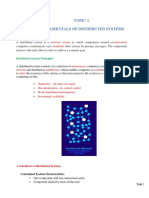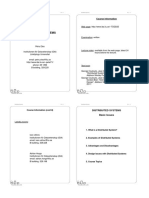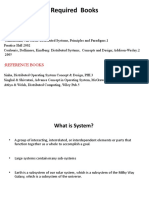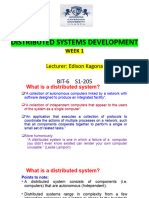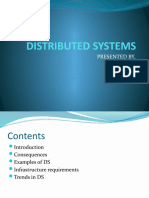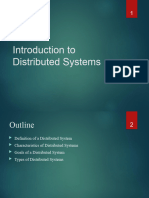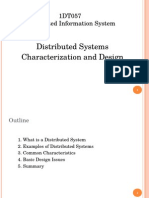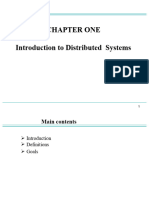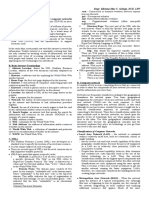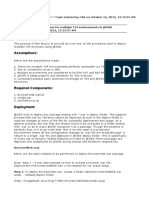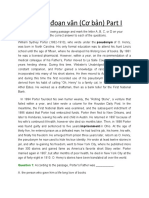0% found this document useful (0 votes)
33 views30 pagesAT Unit1 Distributed - Systems
The document discusses the basics of distributed systems, including definitions and key characteristics. It covers centralized vs distributed systems, examples of distributed systems including the internet and operating systems, and reasons for using distributed architectures like scalability, openness, heterogeneity, and fault tolerance.
Uploaded by
roger.bastida01Copyright
© © All Rights Reserved
We take content rights seriously. If you suspect this is your content, claim it here.
Available Formats
Download as PDF, TXT or read online on Scribd
0% found this document useful (0 votes)
33 views30 pagesAT Unit1 Distributed - Systems
The document discusses the basics of distributed systems, including definitions and key characteristics. It covers centralized vs distributed systems, examples of distributed systems including the internet and operating systems, and reasons for using distributed architectures like scalability, openness, heterogeneity, and fault tolerance.
Uploaded by
roger.bastida01Copyright
© © All Rights Reserved
We take content rights seriously. If you suspect this is your content, claim it here.
Available Formats
Download as PDF, TXT or read online on Scribd
/ 30


























